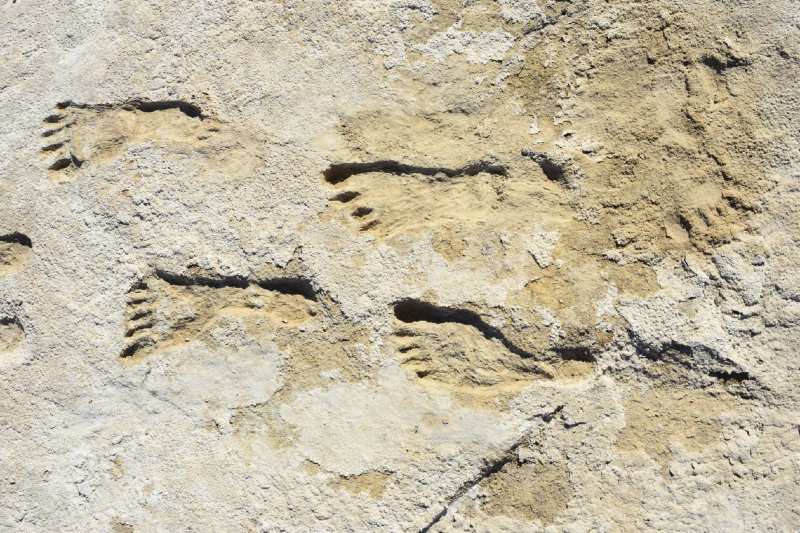New scientific research conducted at White Sands National Park in New Mexico has uncovered the oldest known human footprints in North America.

The discovery reveals evidence of human occupation in the Tularosa Basin beginning at least 23,000 years ago, thousands of years earlier than previously thought.
“These incredible discoveries illustrate that White Sands National Park is not only a world-class destination for recreation but is also a wonderful scientific laboratory that has yielded groundbreaking, fundamental research,” said Superintendent Marie Sauter.
The fossilized human footprints were buried in multiple layers of gypsum soil on a large playa in White Sands National Park.
Seeds embedded in the footprints were radiocarbon dated and analyzed by the U.S. Geological Survey to establish their age.
The research dramatically extends the range for the coexistence of humans and Pleistocene (ice age) megafauna and confirms that humans were present in North America before the major glacial advances at the height of the last ice age closed migration routes from Asia.
“This study illustrates the process of science—new evidence can shift long held paradigms,” said USGS Acting Rocky Mountain Regional Director Allison Shipp.
White Sands National Park contains the world’s largest-known collection of Pleistocene age (ice age) fossilized footprints in the world and has been recognized as a megatracksite since 2014.
MORE: A Sorceress’ Toolkit Has Been Discovered in the Ashes of Pompeii
Those footprints havebeen given the intriguing nickname “ghost tracks.” Each footprint marks the spot where an ancient ancestor once stood many thousands of years ago.
New stories from the past

The newly discovered “ghost tracks” tell an interesting tale of what life was like at this time.
“The footprints left at White Sands give a picture of what was taking place, teenagers interacting with younger children and adults,” said lead study author, Matthew Bennett from Bournemouth University, in a statement. “We can think of our ancestors as quite functional, hunting and surviving, but what we see here is also activity of play, and of different ages coming together. A true insight into these early people.”
In addition to human footprints, tracks from the Columbian mammoth, saber-toothed cat, dire wolf, and other ice age animals have been discovered at White Sands.
RELATED: Archaeologists in Egypt Discover Mummy With Gold Tongue
Scientists from White Sands National Park, the National Park Service, U.S. Geological Survey, Bournemouth University, University of Arizona, and Cornell University, in connection with the park’s Native American partners, have collaborated and consulted on this research. The findings are detailed in an article published in the journal Science.
White Sands National Park protects and preserves the world’s largest gypsum dunefield, at least 23,000 years of archaeology, adaptive flora and fauna, as well as Works Progress Administration-era historic pueblo buildings.
Source: NPS
(WATCH the Bournemouth University video for this story below.)
SHARE This Fascinating Breakthrough With Sure-Footed Friends…



















